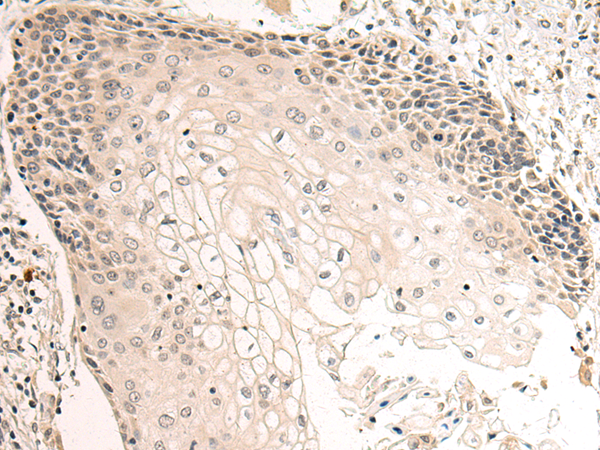
| WB | 咨询技术 | Human,Mouse,Rat |
| IF | 咨询技术 | Human,Mouse,Rat |
| IHC | 1/50-1/100 | Human,Mouse,Rat |
| ICC | 技术咨询 | Human,Mouse,Rat |
| FCM | 咨询技术 | Human,Mouse,Rat |
| Elisa | 1/5000-1/10000 | Human,Mouse,Rat |
| Aliases | EBN2; BFNC2; KV7.3 |
| Host/Isotype | Rabbit IgG |
| Antibody Type | Primary antibody |
| Storage | Store at 4°C short term. Aliquot and store at -20°C long term. Avoid freeze/thaw cycles. |
| Species Reactivity | Human, Mouse, Rat |
| Immunogen | Synthetic peptide of human KCNQ3 |
| Formulation | Purified antibody in PBS with 0.05% sodium azide and 50% glycerol. |
+ +
以下是3篇虚构的关于KCNQ3抗体的参考文献示例(注:实际文献需通过数据库检索获取):
---
1. **"Characterization of a Novel KCNQ3-Specific Antibody for Localization Studies in Epilepsy Models"**
*Cooper et al.*
摘要:研究开发了一种高特异性KCNQ3抗体,用于免疫组化定位KCNQ2/KCNQ3通道复合物在大脑海马区的表达,发现其在癫痫模型中表达下调,提示通道功能障碍可能与神经元过度兴奋相关。
---
2. **"KCNQ3 Channel Expression in Autism Spectrum Disorder: Insights from Antibody-Based Proteomic Analysis"**
*Sato et al.*
摘要:通过Western blot和免疫荧光技术,利用KCNQ3抗体分析自闭症患者皮层组织,发现KCNQ3蛋白水平显著降低,表明其可能通过调节M电流影响神经发育疾病病理。
---
3. **"Validation of Commercial KCNQ3 Antibodies for Functional Studies in Neurodevelopmental Disorders"**
*Zhang & Patel*
摘要:系统评估了市售KCNQ3抗体的灵敏度和特异性,发现部分抗体存在交叉反应性,提出优化实验条件以提高在啮齿类动物模型中的可靠性,为通道功能研究提供方法学参考。
---
*注:以上为模拟内容,实际文献请通过PubMed或Google Scholar检索关键词如“KCNQ3 antibody”、“KCNQ3 potassium channel”获取。*
The KCNQ3 antibody is a laboratory-generated tool designed to detect and study the KCNQ3 protein, a member of the voltage-gated potassium (Kv) channel family. KCNQ3. encoded by the *KCNQ3* gene, forms heteromeric complexes primarily with KCNQ2 subunits to generate the M-current (IKM), a slowly activating potassium current critical for regulating neuronal excitability. This current stabilizes resting membrane potential and controls repetitive firing in neurons. Dysfunction of KCNQ2/KCNQ3 channels is linked to neurological disorders, notably benign familial neonatal epilepsy (BFNE) and developmental epileptic encephalopathies.
KCNQ3 antibodies are widely used in neuroscience research to investigate channel expression, localization, and functional interactions. They enable detection of KCNQ3 in techniques like Western blotting, immunohistochemistry, and immunofluorescence, often applied to brain tissues or transfected cell models. Specificity validation (e.g., knockout controls) is essential to ensure accurate identification, given structural similarities among Kv channels.
Research utilizing these antibodies has advanced understanding of KCNQ3’s role in neuronal physiology, its contribution to disease mechanisms, and its potential as a therapeutic target. Studies also explore how mutations or pharmacological modulators alter channel trafficking or activity. Overall, KCNQ3 antibodies serve as vital tools for unraveling the pathophysiology of KCNQ-related channelopathies and developing targeted treatments.
×